Abstract
1 The effects of a new muscle relaxant, 5-chloro-(2-imidazolin-2-yl-amino)-2, 1, 3-benzothiodazole (DS103-282) have been examined on segmental reflexes and responses of single neurones in the spinal cord of the anaesthetized cat to stimulation of peripheral afferents, ventral roots, acetylcholine and various amino acids. Drugs were administered intravenously and/or iontophoretically.
2 Polysynaptic reflexes were depressed in a dose-dependent manner by 0.01-0.1 mg/kg DS103-282 whereas monosynaptic reflexes were relatively insensitive to this agent.
3 In studies on single dorsal horn neurones, iontophoretically and intravenously administered DS103-282 depressed synaptic excitatory responses, polysynaptic responses being much more sensitive to this agent than monosynaptic responses. In contrast (-)-baclofen preferentially reduced monosynaptic excitation.
4 Doses or ejecting currents of DS103-282 which greatly depressed polysynaptic excitatory responses also reduced spontaneous firing of neurones, but either had no effect or minimal depressant effects on responses to iotophoretically administered excitant amino acids. Acetylcholine-induced excitation of Renshaw cells was depressed by iontophoretically (but not intravenously) administered DS103-282, although ventral root-evoked responses of these cells were insensitive to this agent.
5 Inhibition of spinal neurones by stimulation of peripheral nerves or by iontophoresis of γ-aminobutyric acid or glycine was unaffected by DS103-282.
6 These results indicate that DS103-282 preferentially depresses peripherally evoked polysynaptic excitation of spinal neurones probably by an action on the terminals of excitatory interneurones.
Full text
PDF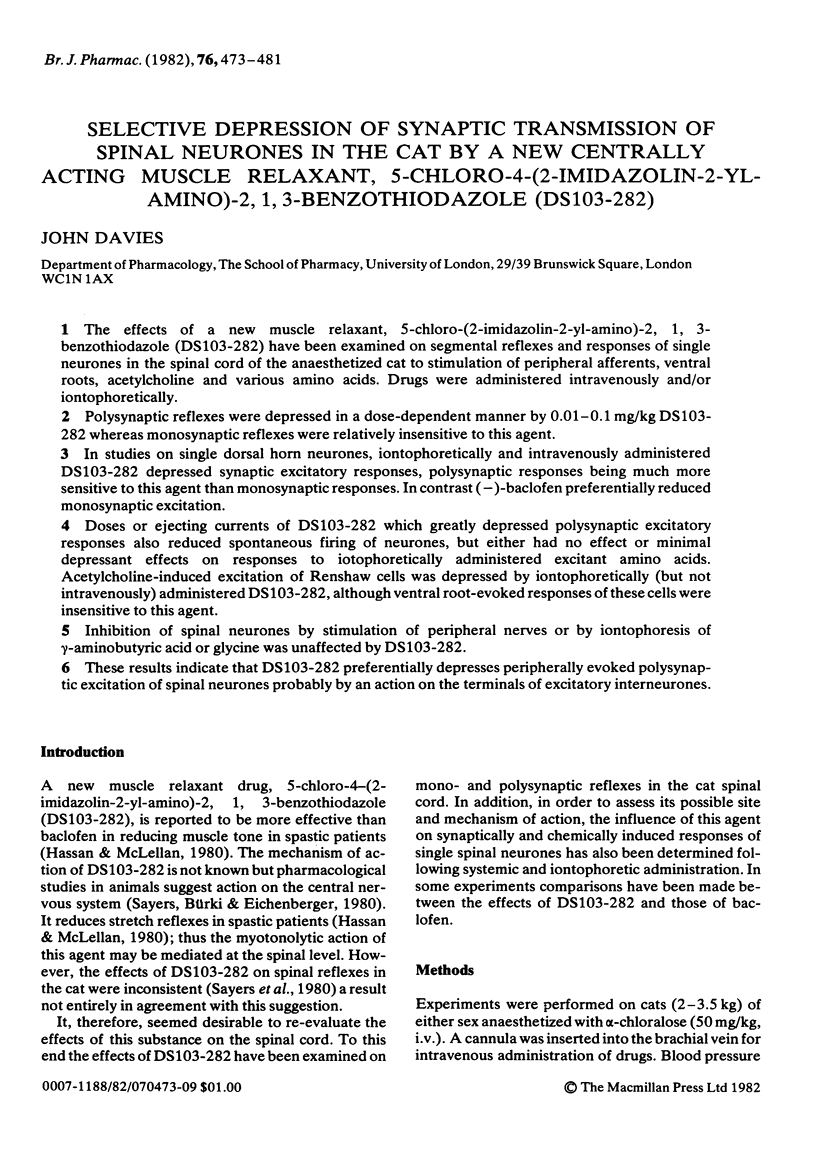
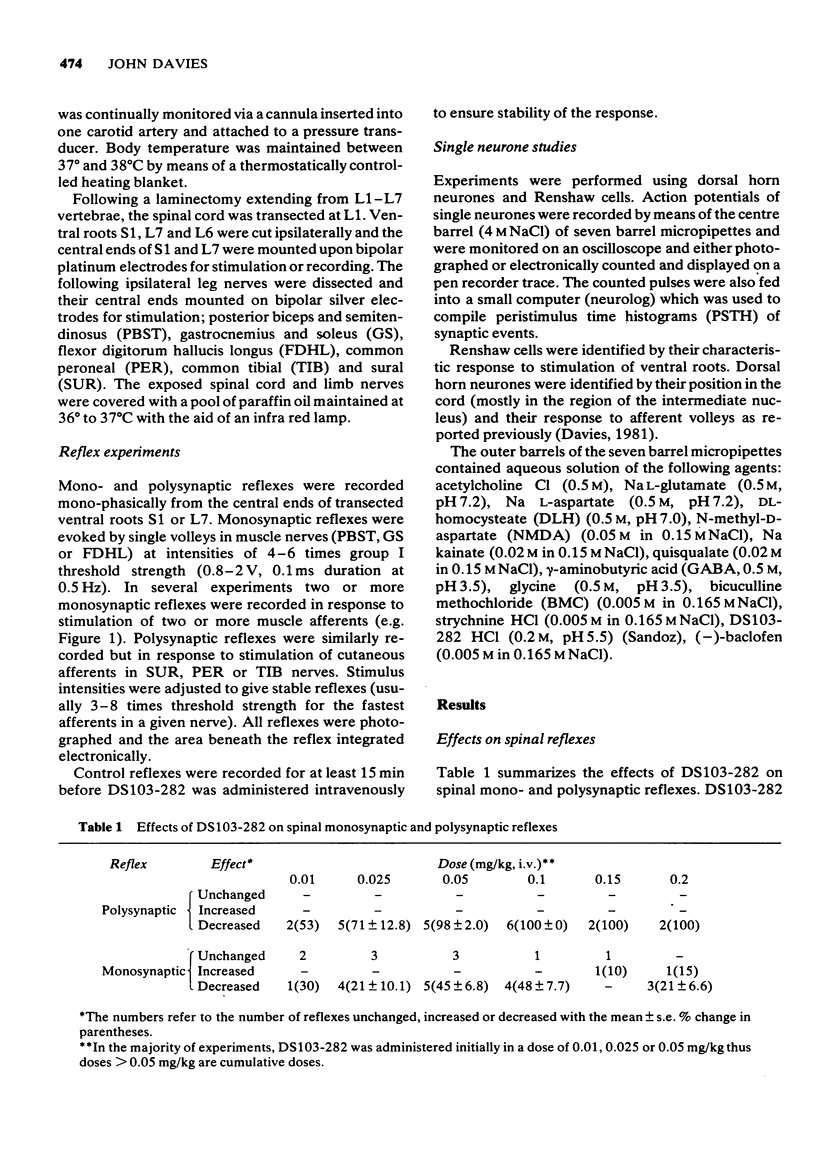
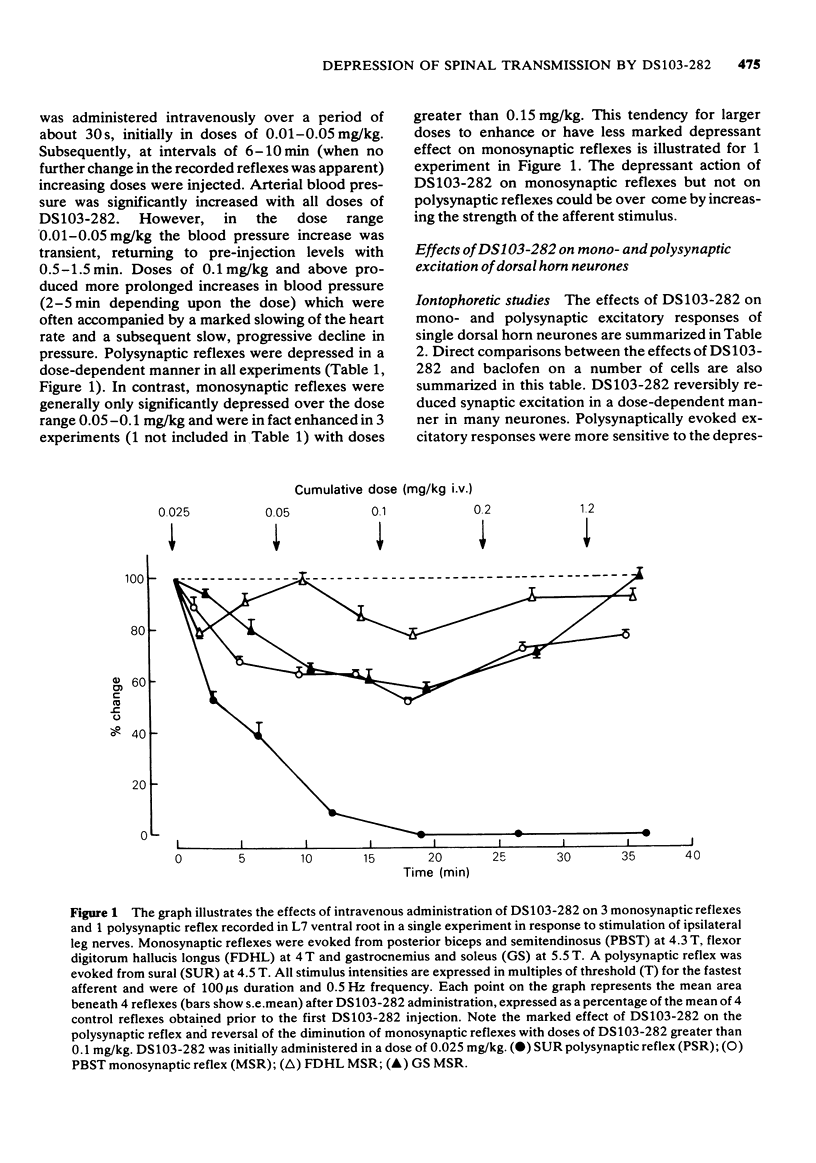
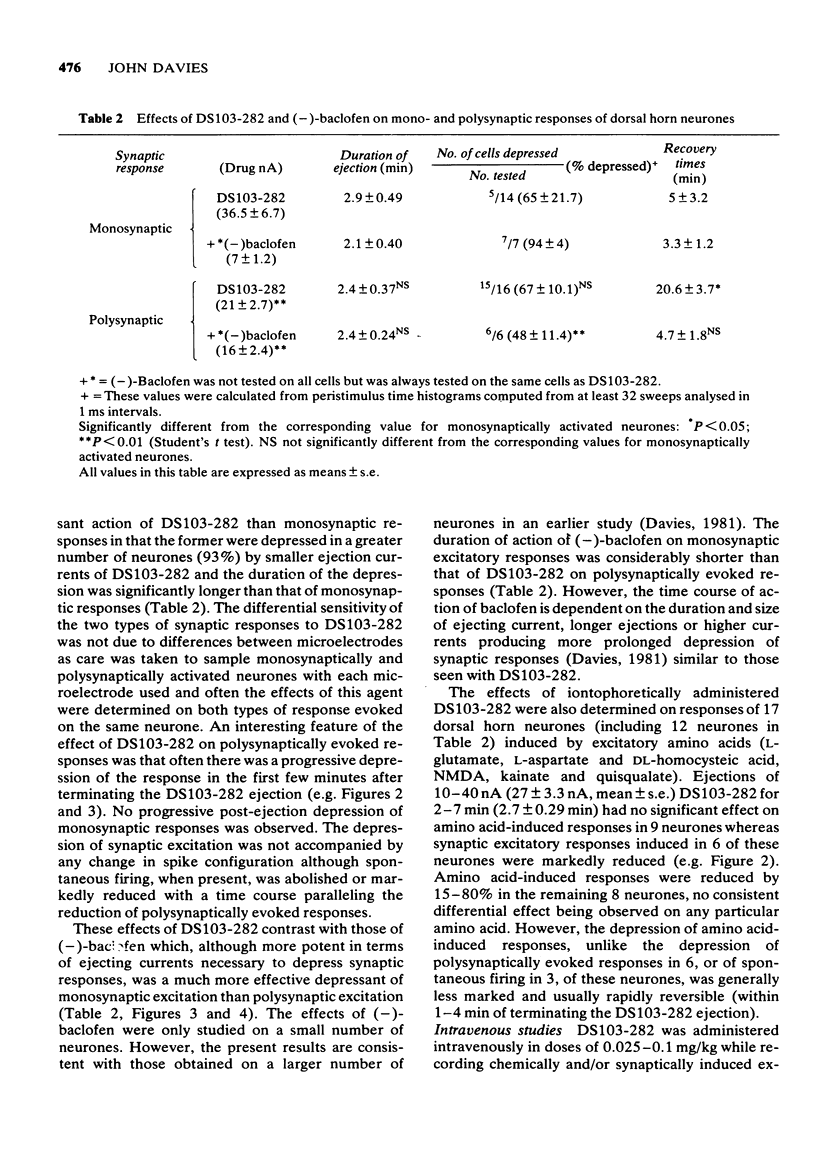
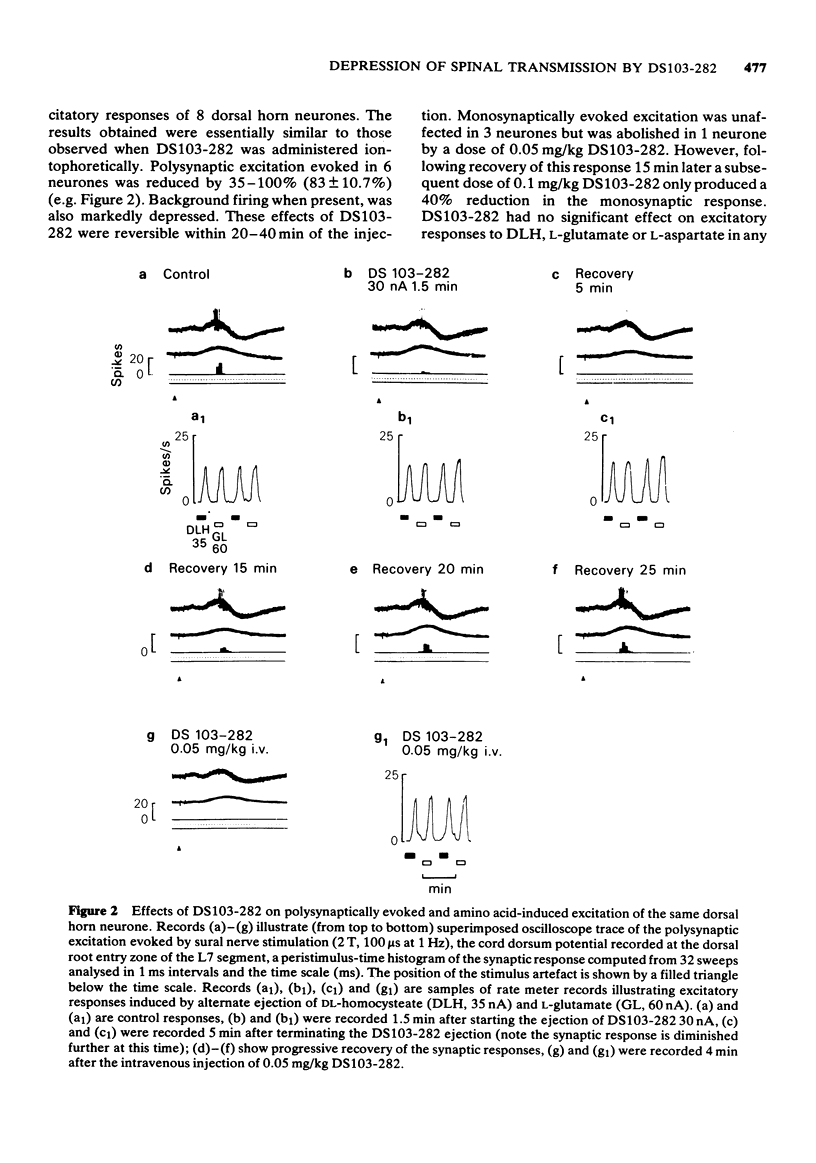
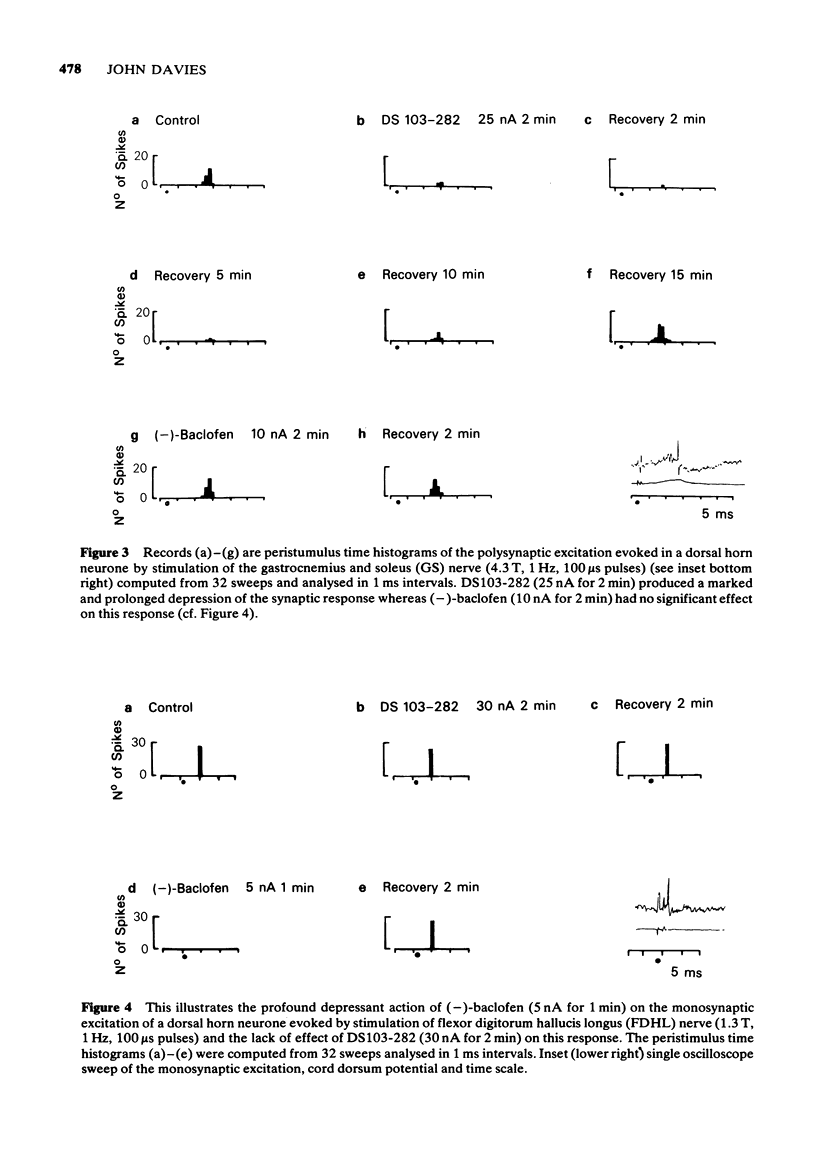
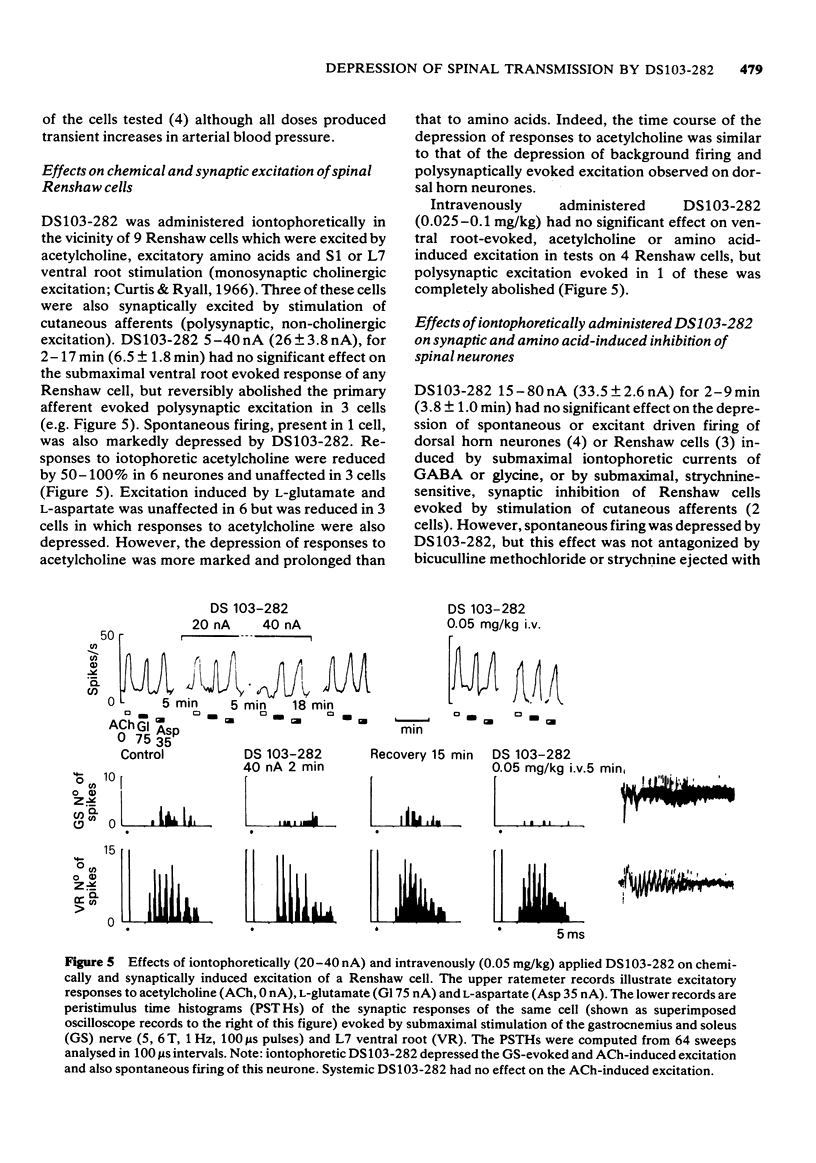
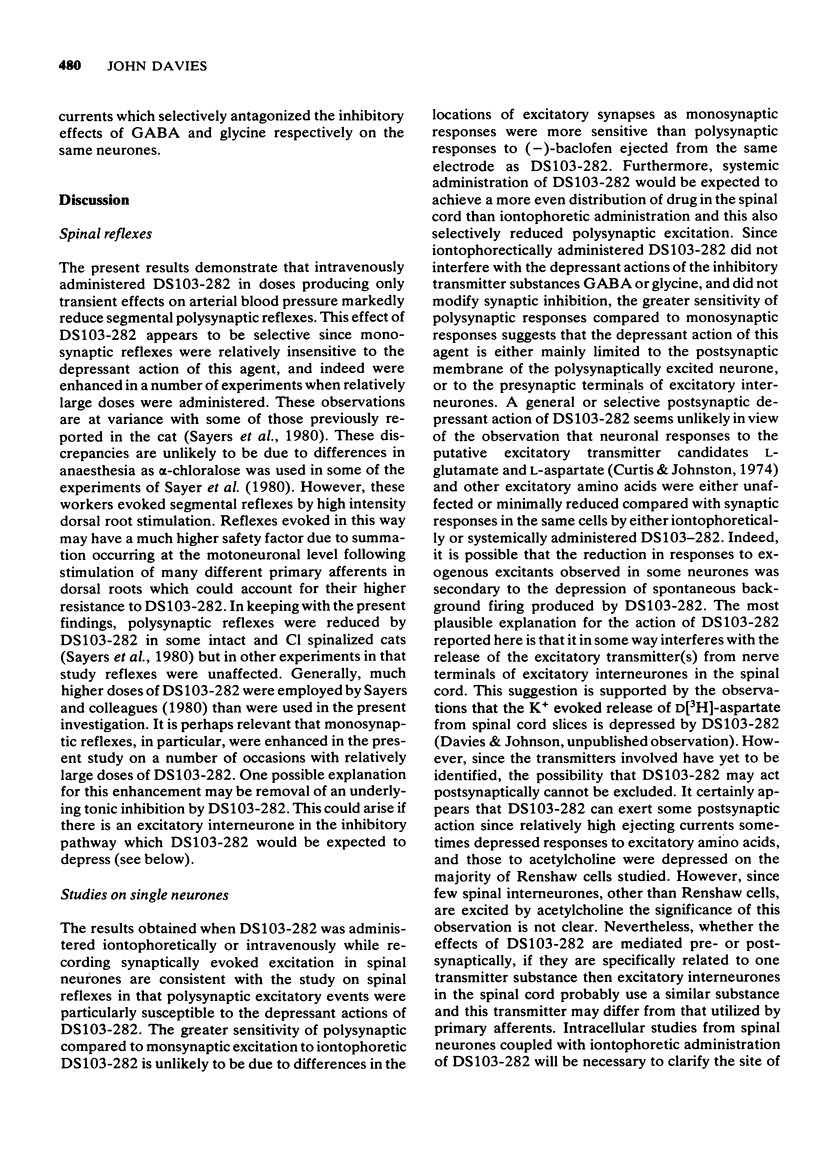
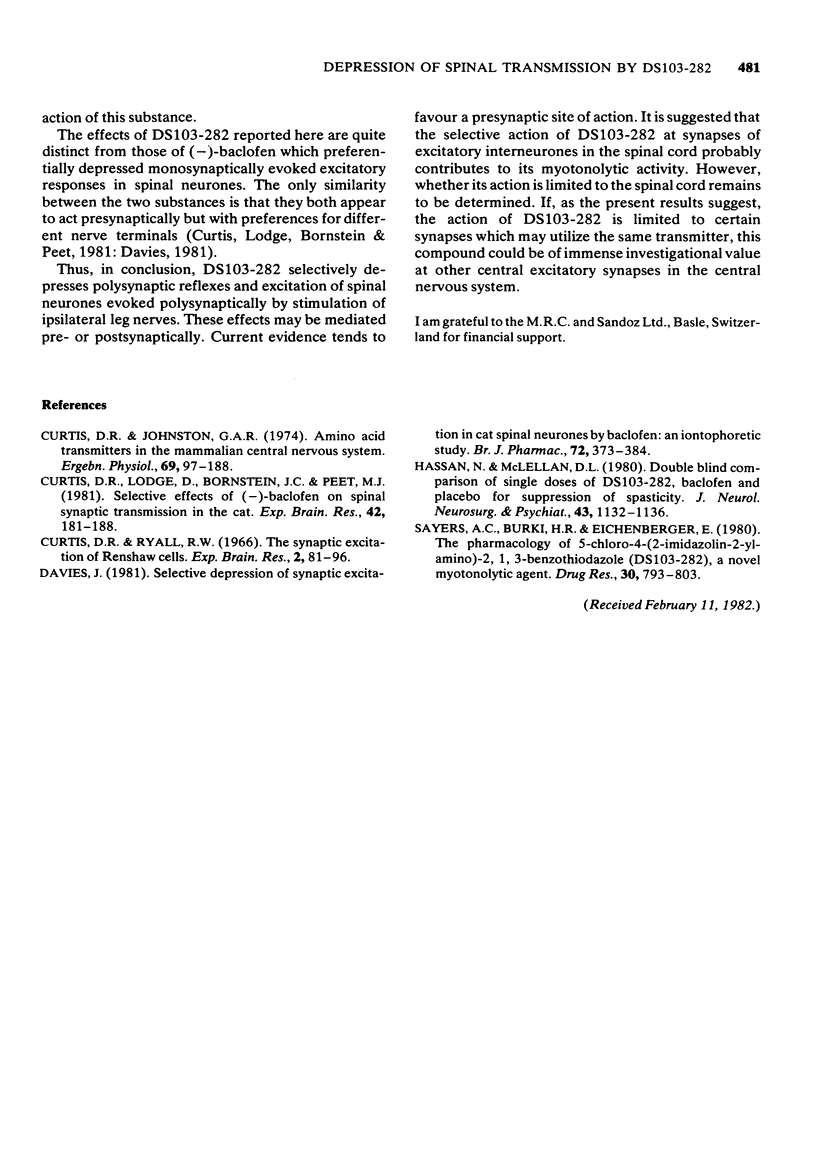
Selected References
These references are in PubMed. This may not be the complete list of references from this article.
- Curtis D. R., Johnston G. A. Amino acid transmitters in the mammalian central nervous system. Ergeb Physiol. 1974;69(0):97–188. doi: 10.1007/3-540-06498-2_3. [DOI] [PubMed] [Google Scholar]
- Curtis D. R., Ryall R. W. The synaptic excitation of Renshaw cells. Exp Brain Res. 1966;2(1):81–96. doi: 10.1007/BF00234362. [DOI] [PubMed] [Google Scholar]
- Davies J. Selective depression of synaptic excitation in cat spinal neurones by baclofen: an iontophoretic study. Br J Pharmacol. 1981 Feb;72(2):373–384. doi: 10.1111/j.1476-5381.1981.tb09137.x. [DOI] [PMC free article] [PubMed] [Google Scholar]
- Hassan N., McLellan D. L. Double-blind comparison of single doses of DS103-282, baclofen and placebo for suppression of spasticity. J Neurol Neurosurg Psychiatry. 1980 Dec;43(12):1132–1136. doi: 10.1136/jnnp.43.12.1132. [DOI] [PMC free article] [PubMed] [Google Scholar]
- Morgan B., Frost B. J. Visual response characteristics of neurons in nucleus of basal optic root of pigeons. Exp Brain Res. 1981;42(2):181–188. doi: 10.1007/BF00236904. [DOI] [PubMed] [Google Scholar]
- Sayers A. C., Bürki H. R., Eichenberger E. The pharmacology of 5-chloro-4-(2-imidazolin-2-yl-amino)-2,1,3-benzothiadiazole (DS 103-282), a novel myotonolytic agent. Arzneimittelforschung. 1980;30(5):793–803. [PubMed] [Google Scholar]


